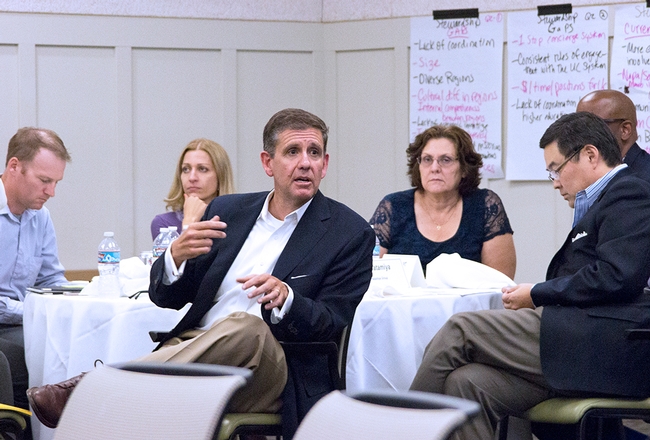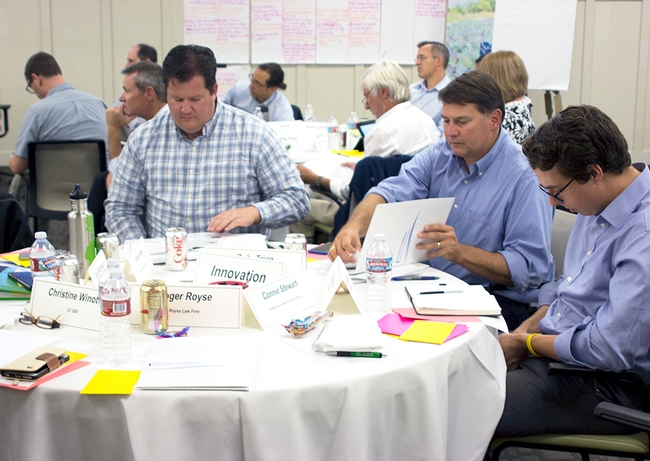ANR develops innovation incubation strategy
“If UC ANR isn't an incubator, I don't know what is. Furthermore, I would argue that the partnership of our land-grant university system with Cooperative Extension is the original and most productive incubator that the world has ever seen,” VP Glenda Humiston wrote in the October-December 2015 issue of California Agriculture.
Since joining ANR, Humiston has been working to expand UC ANR's incubation activities by joining with diverse partners to develop a much broader innovation infrastructure specifically designed to support intellectual property, innovation, entrepreneurship, tech transfer, startups and commercialization aimed at agriculture, natural resources and rural communities.
“A lot of people have ideas, but they don't know how to be business leaders. An incubator connects them with the things they need to be successful as new entrepreneurs,” said Gabe Youtsey, chief information officer.
To kick off development of such a system, Humiston brought together 40 people on Aug. 30 with a wide range of expertise and representing a variety of sectors: agriculture, banking, business, government, technology and higher education – including leaders of several successful incubators. The purpose of the meeting, held at the ANR building in Davis, was to engage the group in developing a comprehensive strategy to nurture new technologies and innovative businesses for agriculture and natural resources.
“We're not looking to reinvent the wheel or duplicate existing efforts,” Humiston said, explaining that she hopes to support and leverage the strengths and efforts of partners.
Christine Gulbranson, UC senior vice president of research innovation and entrepreneurship, and Reg Kelly of UC San Francisco, who created QB3, – one of UC's best performing incubators – participated in the session. The quantitative biologists at UC Berkeley, UC San Francisco and UC Santa Cruz who comprise QB3 take on challenges in biology using physics, chemistry, and computer science. QB3's Startup in a Box provides legal and grant-writing help for biotech startups.
“We want to take the QB3 model and modify it for ANR,” Humiston said. “But we don't have the resources to build a statewide system by ourselves so we're catalyzing like-minded partners to jointly develop the needed statewide innovation infrastructure.”
Such an innovation system could benefit a wide array of entrepreneurs in rural areas and help to commercialize ideas generated by UC Cooperative Extension specialists and advisors.
“Over the past eight years, ANR researchers have filed 148 patents,” Humiston said. “However, it is unclear if many of those had the support they needed to go the next step.”
At the meeting, the group divided into five tables of eight people. Each table had representatives of UC ANR, various UC campuses, state and federal government, funding institutions, incubators, and different industries. They discussed issues around innovation, place, talent, stewardship and engagement, answering the following questions:
- What exists now?
- Where are the gaps that need to be filled?
- Which of these gaps could UC ANR help catalyze and fill, either with partners or on its own?
- How could this work to fill the gaps be funded?
- How do we measure success?
Conversations were lively and many ideas were brought forth for specific projects and other implementation. “It's really exciting,” said Humiston. “People were jazzed. Virtually all of the participants said they want to work with us on next steps.”
In addition to Humiston and Youtsey, AVP Wendy Powers and UCCE advisors David Doll and Andre Biscaro participated for ANR. Consultant Meg Arnold is writing up a report, which is expected to be released in early October.



